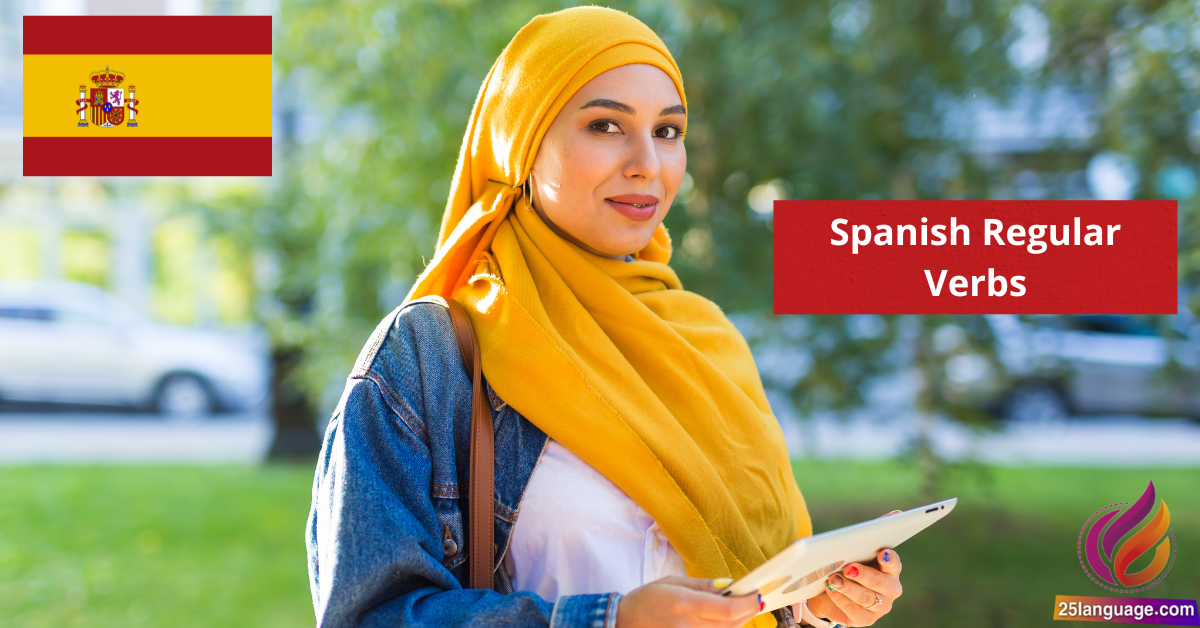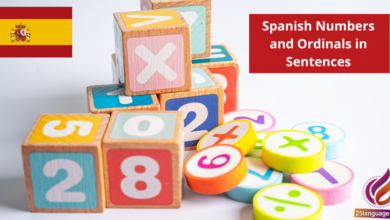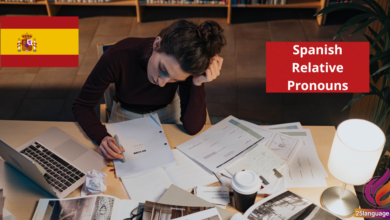Spanish Regular Verbs AR, ER, IR Conjugations

Unlock the power of the Spanish language by mastering regular verb conjugations! In this lesson, you’ll delve into the three main categories of Spanish verbs: -AR, -ER, and -IR. Understanding these patterns will empower you to express thoughts, actions, and desires with ease. Whether you dream of traveling to a Spanish-speaking country or simply want to communicate with friends, grasping these conjugations is your first step toward fluency. Let’s get started!
Mastering Spanish Regular Verbs Through Conjugation Patterns
In Spanish, regular verbs are categorized into three groups based on their infinitive endings: -ar, -er, and -ir. Each group follows specific conjugation patterns that remain consistent across all verbs within that group. To conjugate regular verbs in the present tense, remove the infinitive ending and add the corresponding endings based on the subject of the sentence. For example:
- -ar verbs:
- hablar (to speak) becomes yo hablo (I speak).
- tú hablas (you speak).
- él/ella habla (he/she speaks).
- -er verbs:
- comer (to eat) becomes yo como (I eat).
- tú comes (you eat).
- él/ella come (he/she eats).
- -ir verbs:
- vivir (to live) becomes yo vivo (I live).
- tú vives (you live).
- él/ella vive (he/she lives).
The patterns for conjugating regular verbs in the present tense are crucial for effective communication. The endings differ slightly based on the verb group,but they share a shared structure for each subject pronoun. Below is a table summarizing the conjugation rules for each type of regular verb:
| Verb Type | Infinitive Ending | Subject Pronoun | Conjugation Example | English Translation |
|---|---|---|---|---|
| -ar | -ar | yo | hablo | I speak |
| -ar | -ar | tú | hablas | you speak |
| -er | -er | yo | como | I eat |
| -er | -er | tú | comes | you eat |
| -ir | -ir | yo | vivo | I live |
| -ir | -ir | tú | vives | you live |
Unlocking the Secrets of -AR, -ER, -IR Verbs in Spanish
In Spanish, verbs are categorized into three main groups based on their endings: -AR, -ER, and -IR. Each group follows a specific pattern for conjugation that learners must memorize. The regular -AR verbs are conjugated by removing the -AR ending and adding the appropriate endings: -o, -as, -a, -amos, -áis, -an. For example, the verb “hablar” (to speak) conjugates as follows:
- Yo hablo (I speak)
- Tú hablas (You speak)
- Él/Ella/Usted habla (He/She/You speak)
- Nosotros/as hablamos (We speak)
- Vosotros/as habláis (You all speak)
- Ellos/Ellas/Ustedes hablan (They/You all speak)
Similarly, the -ER and -IR verbs have their own endings. For -ER verbs like “comer” (to eat),the endings are -o,-es,-e,-emos,-éis,-en. Hence “comer” is conjugated as:
- Yo como (I eat)
- Tú comes (You eat)
- Él/Ella/Usted come (he/She/You eat)
- Nosotros/as comemos (We eat)
- Vosotros/as coméis (You all eat)
- Ellos/Ellas/Ustedes comen (They/You all eat)
For -IR verbs like “vivir” (to live), the endings are similar to those of -ER verbs: -o, -es, -e, -imos, -ís, -en. Here’s the conjugation for “vivir”:
- Yo vivo (I live)
- Tú vives (You live)
- Él/Ella/Usted vive (He/She/You live)
- Nosotros/as vivimos (We live)
- Vosotros/as vivís (You all live)
- Ellos/ellas/Ustedes viven (They/You all live)
Practical Approaches to Conjugating spanish Regular Verbs
To effectively conjugate regular verbs in Spanish, it’s essential to understand the three main types of verbs and their endings. Spanish verbs fall into three categories based on their infinitive endings: -ar, -er, and -ir. Each category follows a similar pattern of conjugation in the present tense. Such as:
- -ar: hablar (to talk)
- -er: comer (to eat)
- -ir: vivir (to live)
To conjugate these verbs in the present tense, remove the infinitive ending and add the appropriate ending based on the subject pronoun. Here are the regular endings for each type:
| Subject Pronoun | -ar Verb Ending | -er Verb Ending | -ir Verb Ending |
|---|---|---|---|
| yo (I) | -o | -o | -o |
| tú (you) | -as | -es | -es |
| él/ella/usted (he/she/you formal) | -a | -e | -e |
| nosotros/as (we) | -amos | -emos | -imos |
| vosotros/as (you all, informal) | -áis | -éis | -ís |
| ellos/ellas/ustedes (they/you all) | -an | -en | -en |
For example, conjugating the verb hablar for “we talk” would be nosotros hablamos, while “I eat” using comer becomes yo como. Lastly, it’s important to practice these conjugations within sentences for better retention. Consider sentences such as Nosotros hablamos español cada día (We talk Spanish every day) and Yo como una manzana (I eat an apple) to solidify your understanding.
Building Your Confidence with Spanish Regular Verb Conjugations
Regular verbs in Spanish are categorized into three conjugation groups based on their infinitive endings: -ar, -er, and -ir. These verbs follow predictable patterns, making it easier for learners to master conjugations. Below are the rules for each category:
- -ar verbs: To conjugate, remove the -ar ending and add the appropriate endings:
- -o (I)
- -as (you, singular formal)
- -a (he/she/it)
- -amos (we)
- -áis (you, plural informal)
- -an (they)
- Example: hablar (to talk)
- yo hablo (I talk)
- tú hablas (you talk)
- él/ella habla (he/she talks)
- -er verbs: Remove the -er ending and add the endings:
- -o (I)
- -es (you, singular formal)
- -e (he/she/it)
- -emos (we)
- -éis (you, plural informal)
- -en (they)
- Example: comer (to eat)
- yo como (I eat)
- tú comes (you eat)
- él/ella come (he/she eats)
- -ir verbs: remove the -ir ending and add the endings:
- -o (I)
- -es (you, singular formal)
- -e (he/she/it)
- -imos (we)
- -ís (you, plural informal)
- -en (they)
- Example: vivir (to live)
- yo vivo (I live)
- tú vives (you live)
- él/ella vive (he/she lives)
| Spanish Verb | Infinitive Ending | Conjugation Example | Translation |
|---|---|---|---|
| hablar | -ar | yo hablo | I talk |
| comer | -er | yo como | I eat |
| vivir | -ir | yo vivo | I live |
The Way Forward
Conclusión de la Lección: Verbos Regulares en Español: Conjugaciones -AR, -ER, -IR
¡Felicidades por completar esta lección sobre los verbos regulares en español! Hoy hemos explorado las conjugaciones de los verbos -AR, -ER y -IR, y cómo estas terminaciones cambian según el sujeto. Recordemos que dominar estas conjugaciones es una herramienta fundamental para tu progreso en el aprendizaje del español, ya que te permitirá formar oraciones básicas y comunicarte con mayor fluidez.Hemos visto que, aunque los verbos en cada categoría siguen patrones específicos, ¡no te desanimes si al principio te parece un poco complicado! Con práctica y dedicación, te convertirás en un experto en conjugaciones. Te animo a que practiques regularmente, ya sea escribiendo frases, manteniendo conversaciones simples o incluso cantando canciones en español. Cuanto más uses estos verbos en tu vida diaria, más naturales se sentirán.
Recuerda que el aprendizaje de un idioma es un viaje, lleno de oportunidades para crecer y disfrutar. No dudes en volver a repasar esta lección y realizar ejercicios adicionales para reforzar tus conocimientos. ¡Estamos aquí para apoyarte en cada paso!
Sigue adelante y no pierdas la motivación. con cada nuevo verbo que aprendas,das un paso más hacia la fluidez en español. ¡Buena suerte y hasta la próxima lección!





























